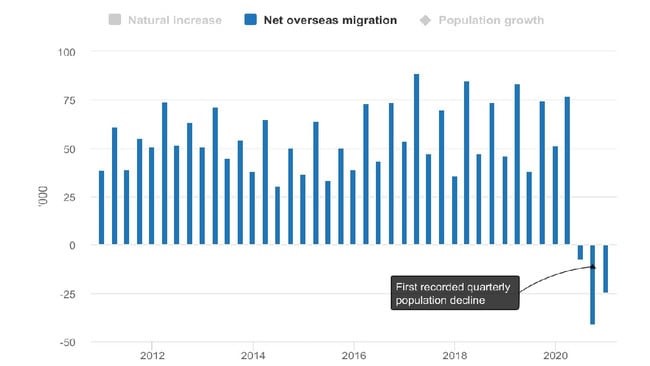How has Australia’s border closures impacted the hiring climate?
It’s been over a year since the Prime Minister of Australia, Scott Morrison, announced border and business restrictions in response to the COVID-19 pandemic on 18 March 2020. At that time Australia closed its borders to non-residents and in turn, the result has been significant for national businesses, contractors, employers, and employees.
When COVID came along, the recruitment industry came to a crashing halt – for a few weeks. Then just a quickly as our industry shut down, companies came to accept the new normal work environment and productivity and projects re-started. Our clients (of all sizes) sizes began searching for new recruits ? and this spurred on a talent shortage of huge proportions. In the Australian engineering sector, where Peopleconnexion is mostly based, the demand for qualified employee’s has risen to a rate close to what was normal in the pre-pandemic (and even pre-GFC) climate. Though, closed borders and limited home-grown talent has meant the demand is unmet.
Over the past decade in any given year, Australia welcomed an average of more than 200,000 new migrants to our shores, many of whom would go on to become homeowners. But since the pandemic arrived in Australia, migration has not only flat lined but outright reversed. Between April 1, 2020 and December 31, 2020, net migration was -73,900, as far more Australians left permanently than migrants arrived. Meanwhile, the number of temporary visa holders (international students, skilled workers, etc) currently in Australia has plummeted by over 700,000 since reaching its seasonal peak in December 2019.
We are seeing competition for engineering talent continue to rise across Australia, with job openings at a record high. According to Reuters, ?Job vacancies in Australia hit record highs in the May quarter to be 57% above pre-pandemic levels, while businesses in all sectors reported difficulties in finding workers in a rapidly growing economy.?
Skill shortages have emerged, particularly in highly skilled areas that have traditionally relied on skilled migration. Prime Minister Scott Morrison has highlighted the workforce skills shortage as the ‘single biggest challenge facing the Australian economy? in recovering from the COVID-19 pandemic.
The imbalance between the supply and demand of professionals has serious implications for the project delivery within the country and the wider economic recovery of Australia.
While it’s possible that we could see immigration starting to impact the recruitment market next 12 months, it’s unlikely to address the skills gap we are presented with at the moment. Chris Richardson, partner with Deloitte Access Economics, agrees that the loss of migrants will weigh on economic recovery. ?Even if Australia opens most international borders gradually through 2021, the nation’s total population in just two years is set to be about 600,000 smaller than we?d forecast it to be ahead of COVID-19. That shortfall looks here to stay,? Richardson says.
The employers we are talking to, agree this is a top concern. The power balance has shifted in favour of job seekers and as a result, organisations are working harder than ever to hold onto their employees. We are seeing hiring managers have to seriously think about succession planning and businesses have had to rethink the employee experience, with increased benefits and fully flexible work arrangements more common than before.
Today’s shortage of experienced and qualified specialty professionals does not necessarily ensure you will advance your career. However, the more proactive you are?from expanding your hard skills to focusing on your soft skills to networking to considering factors beyond salary’the faster you will find the ideal job opportunity.
As an employee the ball is in your court, leverage your stand-out qualities on your resume and during interviews and set your career up for success.

